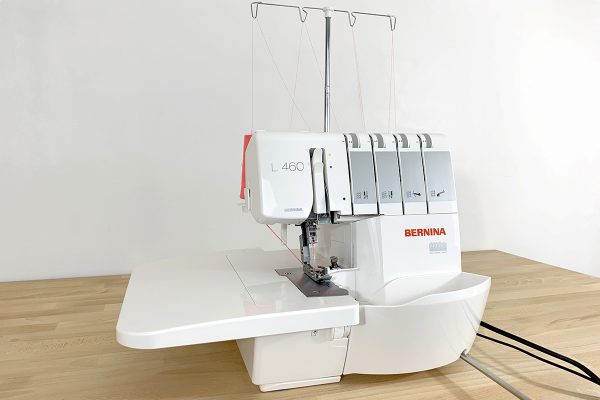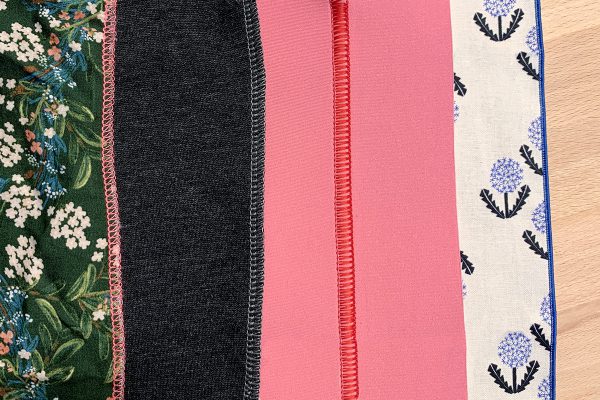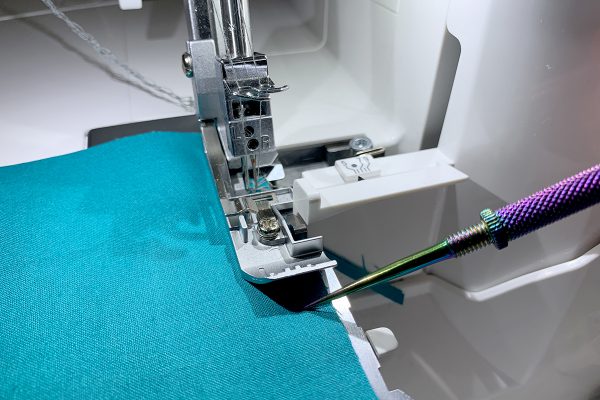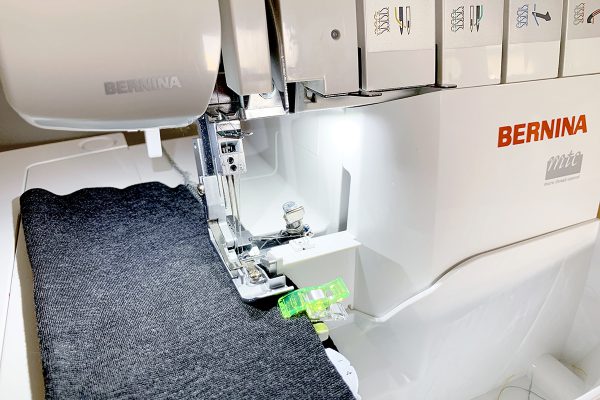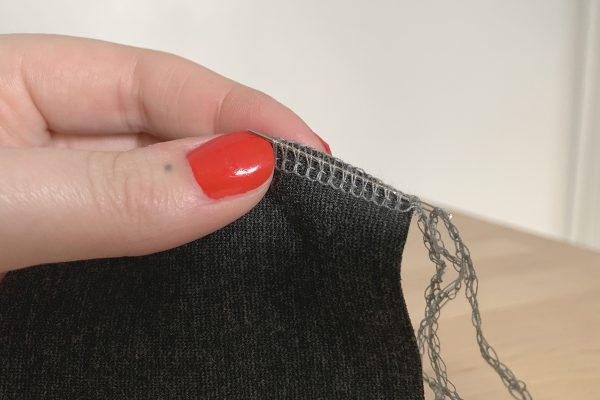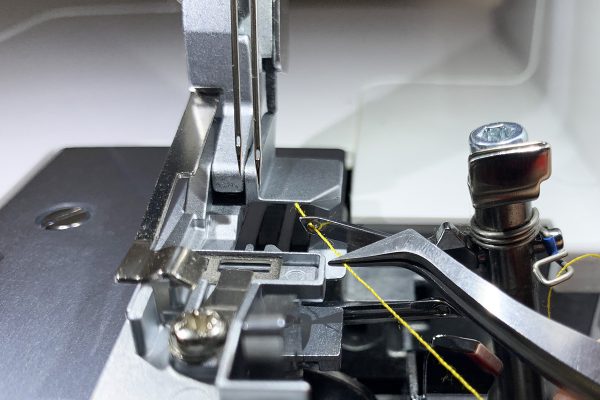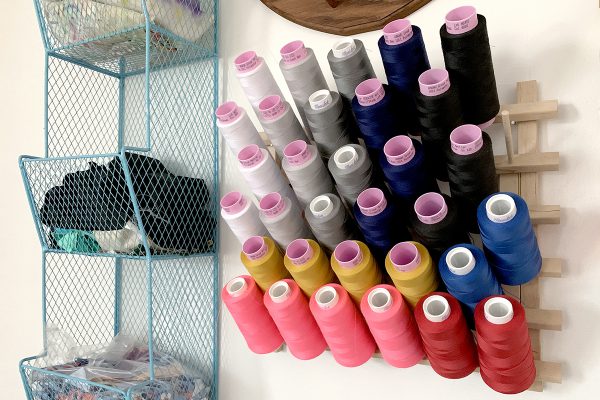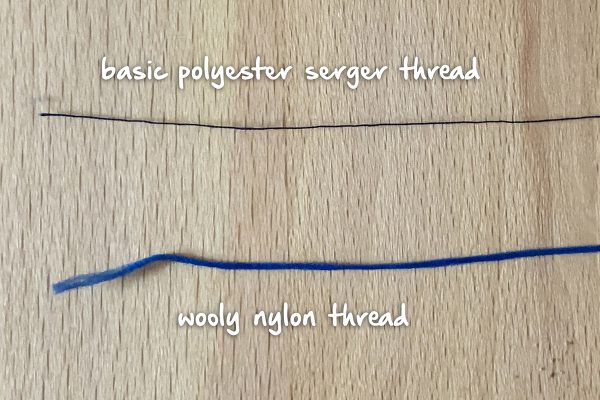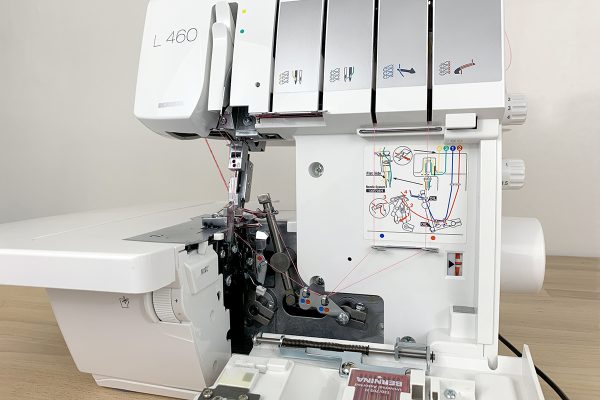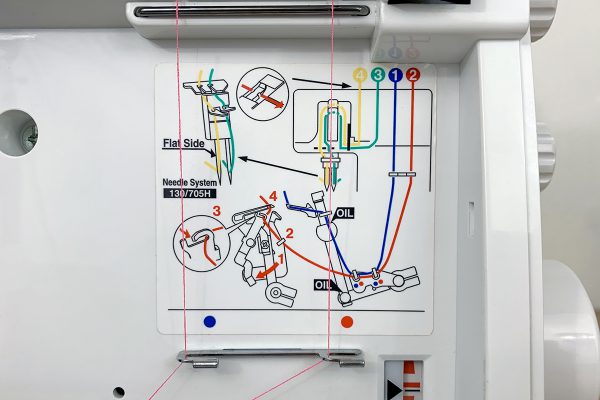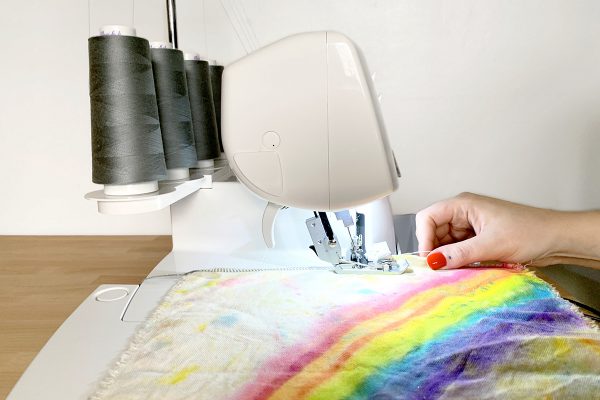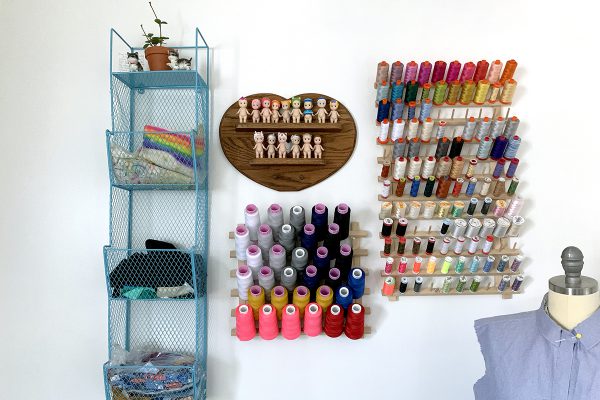Welcome to the world of overlockers! Maybe you have never worked with a serger before, or it could be that you just haven’t tried one in a long time. Either way, I’m here to walk you through all the essentials.
In this series of posts, we’ll start from square one and slowly walk through all the cool techniques your overlocker can do. By the time we wrap up this summer, you’ll be serging with confidence! Let’s start by answering a few basic questions.
What is an overlocker?
Your first question might about what this machine actually does. An overlocker (or serger) is a type of sewing machine that uses multiple threads to seam fabric while also overcasting to cover raw edges. It can be used for construction, finishing, or both at the same time. This can involve as few as two or as many as eight threads depending on the make and model of the overlocker and the stitch selected. Most stitches or technique use three or four—we’ll talk about the cases for all these different things later on.
What is a serger?
A serger is an overlocker. An overlocker is a serger. The terms are interchangeable—basically it boils down to who’s talking about the machine. Overlocker (and overlocking, as a verb) is the more common term in European countries, while serger/serging is more common stateside. Because BERNINA is a Swiss-based company, we tend to use the word overlocker around here.
What tools do I need for my overlocker machine and projects?
For your machine, the essentials for machine maintenance will come in the box (things like screwdrivers, thread nets, and oil). It’s important to know that the oil used on your overlocker is different from the oil used on your standard machine—these bottles are not interchangeable! You can read more about overlocker cleaning and care over here.
There are some other notions that you might find handy to use alongside your serger:
- An awl or stiletto. A pointed tool like these can be helpful when it comes to feeding fabric close to the presser foot and more importantly, the cutting knife. Keep those fingers away, and use an awl to keep the fabric moving where you want it!
- Wonder Clips by Clover. Aside from your fingers, another thing you want to keep clear of the cutting knife is a metal pin. Some of us are in the habit of sewing over pins on our standard sewing machine (tsk tsk!), but this is an absolute no-no, if not an impossibility, on a serger. Your cutting knife will be severely damaged if you accidentally clip one of those pins, and worse yet, you run the risk of being injured by the shrapnel in that incident. Avoid the chaos altogether by using Wonder Clips to hold your fabric together!
- Tapestry needles. At the end of your serged seams, your thread chains should be secured by weaving or tucking them back into the seam about an inch or so. This is most easily done with a large-eye, blunt-tipped tapestry needle.
- A pair of nice sharp tweezers comes with the L 450 and L 460 (stashed conveniently in the looper door when you pull it down), but I always keep an extra pair in my tool kit. They make it easy to thread loopers, needles, or in any tight spaces where your fingers might not be able to maneuver with grace.
- Narrow clear elastic. This one may be a bit more advanced, but layering clear elastic with knit seams can add stability. If you aspire to work with lighter weight or super stretchy knits, this is a great thing to have on hand!
What’s up with serger thread? Why the big cones? It seems expensive to buy so much thread to match every new project!
First off, it’s important to know that you can use lots of different kinds of thread in your overlocker. Just like traditional sewing applications, you just need to consider the project you’re working on and choose the best thread suited for that fabric and application. You may choose to use a decorative thread for some things.
That being said, most of the time you will want to use cones of polyester “serger” thread. Polyester threads are more durable and will hold up to more stress, stretching, washing, and wearing—all things that come in to play for the kinds of projects constructed on the overlocker. This thread is usually found on larger cones because an overlocker uses more thread to create a stitch than a standard machine. When those loopers are wrapping thread around the edge of your fabric, you end up using quite a bit more than a typical straight stitch would.
There is one type of thread that is occasionally used in overlockers that you may not be familiar with—texturized nylon thread. (A common brand is Wooly Nylon.) It’s a fluffy, stretchy thread that you may opt to use for a variety of reasons. Because of its fluffiness, it’s softer than typical poly thread, so it’s great for seams at cuffs or anything that’s close fitting. The added stretch also makes it the best choice for super stretchy fabrics like spandex or swimwear. We’ll talk more about this thread as we dive into those techniques, but I wanted to make mention of it early on because it’s often an overlooked choice for finishing.
Finally, take a deep breath and repeat after me: “My serger thread does not need to match my fabric perfectly.” That’s a hard habit to break. But when you’re buying four spools at a time, rather than just one, there is no need to spend an arm and a leg on thread to match every single project.
Instead, keep a few neutral shades on hand and choose them to match the value of your fabric. You’ll want white (or off-white), light grey, dark grey, and black. Hot tip: If you’re not sure what shade is the best match for your fabric, take a photo of it in black and white and choose what blends in best!
Okay, I think I’ve got it. Now what about threading?
Threading is usually the most intimidating hurdle for folks new to overlockers, but I am here to assure you that you can do it. It is not a difficult process, but it is certainly a process. Just be patient and take your time to thread all the appropriate guides. After you do it a few times, you’ll get the muscle memory down!
BERNINA’s resident Overlocker Specialist, Jaime David, has taken the time to lay out all the steps in detail in this blog post here. These steps are going to be pretty universal for manual threading sergers, but be sure to read through the manual for your particular machine to double check.
One of the best parts of our BERNINA L 450 and L 460 overlockers is that when you bring down the looper door, there’s a schematic of the threading paths right in front of you to reference and everything is color coded. Simply follow each color’s path and you’ll be stitching in no time.
I have it threaded. How do I know it’s working? Do I need to adjust any settings?
When you have the machine locked and loaded, you just need to hit the gas pedal! Unlike a standard sewing machine, it is perfectly safe (and often encouraged) to stitch in the air, meaning sewing without fabric under the presser foot. Your threads should form a tiny chain even without fabric. Throw a scrap of fabric under the foot to test it for sure, and you’re ready to go.
If your machine isn’t forming a complete stitch, something probably got missed and it’s most likely in the looper threading. Cut those two threads and give them another go. Remember that it all boils down to muscle memory. It’s unlikely you’ll get it perfect on the first try! You’re learning how to operate a whole new piece of equipment and that takes practice, patience, and time.
At this point, the machine is prepared for anything. Over the next few months, we’ll take a look at how to set up different stitches from this point. We’ll cover all the essentials—an overlock stitch, flatlocks, rolled hems, and troubleshooting all these techniques. Will you be following along? What do you feel you need the most help with on the overlocker?
Overlocker/Serger for Beginners Series
Part 1: Overlocker for Beginners—An Introduction to Sergers
Part 2: Overlocker for Beginners—The Essential Overlock Stitch





